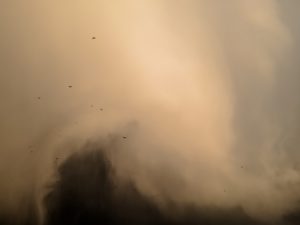
Find air purification that have the blue butterfly tick of approval:
Factsheet
Dust Storms
It’s important for people with asthma or other respiratory conditions to be prepared when dust storms are forecast in their area.
Dust storms bring increased air pollution which causes breathing difficulties in people with asthma by irritating the lungs.
The stress from severe weather events such as dust storms can also cause anxiety which can trigger asthma symptoms.
What you can do
Things to remember:
- The longer you’re exposed, the greater the chance for symptoms
- Children and the elderly are most at risk of breathing difficulties
- Symptoms can linger for days after the dust storm
Dust storm asthma plan
People with asthma should take the following steps to reduce the effects of dust storms on their health:
- Stay indoors with windows, doors and air vents closed
- Stay in air-conditioning, if possible. If you have an air conditioner, switch it “recycle” or “recirculate” to reduce the amount of dust getting into your home
- Take your preventer medication as directed
- Avoid doing a lot of exercise outdoors
- Follow your written asthma action plan
First Aid for Asthma
If asthma symptoms occur:
- Follow your personal asthma action plan
- If you don’t have asthma action plan, take 4 separate puffs of a blue/grey reliever
- If the symptoms aren’t going away or are getting worse, then follow the steps in First Aid for Asthma
Download our First Aid for Asthma and Kids’ First Aid for Asthma charts
If you’re worried about your asthma, visit your doctor. If you are experiencing wheezing, chest tightness or are finding it hard to breathe seek urgent medical assistance.


